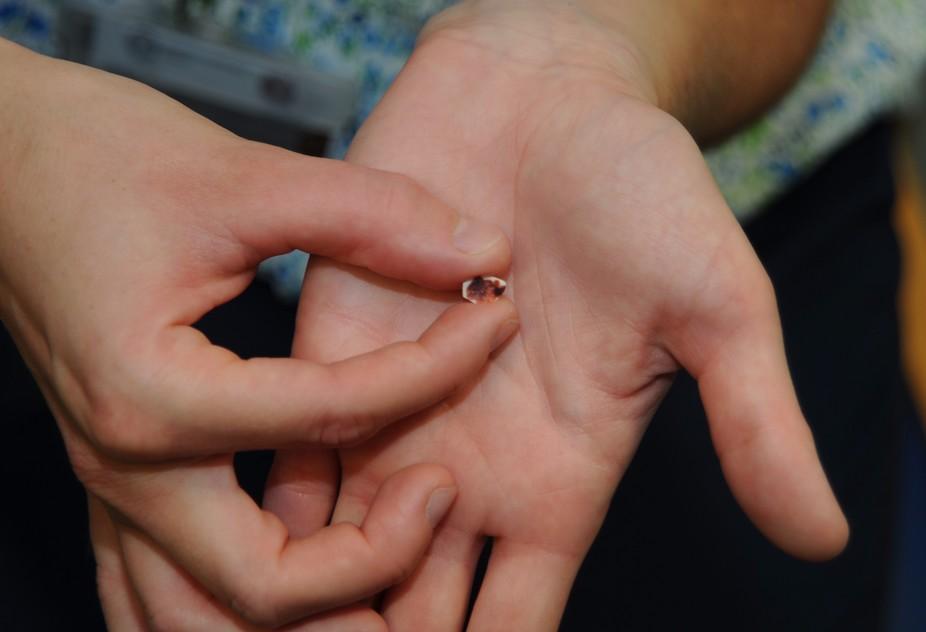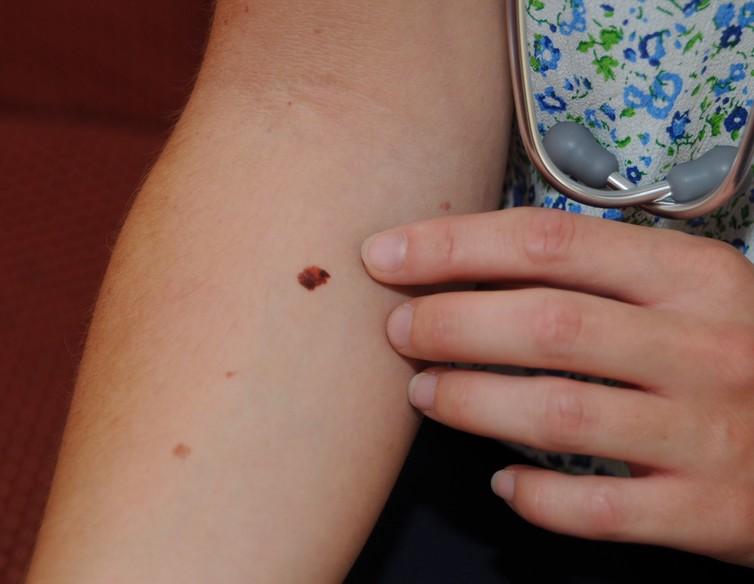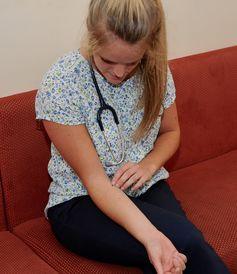Melanoma tattoos: a simple technique helping doctors develop empathy with patients
Doctors are taught how to treat skin cancer – but not necessarily how to empathise with those who have it

Your support helps us to tell the story
From reproductive rights to climate change to Big Tech, The Independent is on the ground when the story is developing. Whether it's investigating the financials of Elon Musk's pro-Trump PAC or producing our latest documentary, 'The A Word', which shines a light on the American women fighting for reproductive rights, we know how important it is to parse out the facts from the messaging.
At such a critical moment in US history, we need reporters on the ground. Your donation allows us to keep sending journalists to speak to both sides of the story.
The Independent is trusted by Americans across the entire political spectrum. And unlike many other quality news outlets, we choose not to lock Americans out of our reporting and analysis with paywalls. We believe quality journalism should be available to everyone, paid for by those who can afford it.
Your support makes all the difference.Competency is not the only thing you want from your doctor. Compassion and empathy are also requirements of the job. But with increasing demands and pressures in healthcare, it may not always be the case that you receive it. And empathy, which has long interested researchers, is not necessarily an innate emotional skill for all.
Those that train future doctors are challenged to find new and improved ways of developing the empathetic care provided to patients. One way of doing this is by using simulation techniques that allow students to experience some of the effects that illness can have on their patients.

This might include wearing specialised suits, headphones or glasses that recreate some of the physical and sensory challenges that older patients often face, such as visual impairment due to cataracts, high-frequency hearing loss, reduced mobility and joint stiffness from arthritis. This kind of experiential learning – which, more broadly, might include medical students following a diabetic diet for a week to understand some of the challenges faced by newly diagnosed patients – can foster meaningful insights and have a positive effect on how these soon-to-be doctors relate to patients in the future.
The aim isn’t to subject medical students to trauma, nor to imply that they will truly feel what it is like to actually suffer a condition. But techniques like this can result in a more developed sense of empathy.
Not all illnesses are amenable to simulation technology, of course. Cancer is one example. But malignant melanoma – a type of skin cancer – may be an exception.
Mole transfers
More people are being diagnosed, and living, with malignant melanoma. Making an accurate and timely clinical diagnosis is of critical importance in order to improve a patient’s prognosis.
Understanding the impact that such a condition can have on a person’s life is also hugely important – something that not all doctors will cover in their training (groups of medical students wouldn’t be allowed to watch as a patient received a malignant melanoma diagnosis and most learning is often done with textbooks). Yet malignant melanoma can generate many strong emotions and concerns in patients.

To help students tap into some of these feelings, we developed a stick on mole that simulates one that has turned malignant. As a child, you may remember placing temporary transfer tattoos of your favourite cartoon character or superhero on the back of your hand. The moles are similar to these transfers, but instead, bear the image of an actual patient’s melanoma.
These melanoma tattoos are already being used in medical training to assess how well students recognise and empathetically communicate a melanoma diagnosis. But in a study we’ve published in the British Journal of Dermatology, we explored how the tattoos might influence a medical student’s personal understanding of this important condition.
We applied the melanoma tattoo to willing students, who also listened to an audio recording of the actual patient providing an account of their cancer experience. Students then went about their normal day-to-day activities, interacting with friends and family, while still wearing the tattoo.
The simulation provided a realistic, personal and humbling experience for students. Unsurprisingly, the visual presence of the melanoma tattoo was a major part of the experience, particularly after hearing the patient’s real-life cancer story. The tattoo was a visual stimulus which introduced some of the important emotional and psychological perspectives that patients can often experience, including guilt, stigma and the impact that melanoma can have on a patient’s family. As one student said: “I know that it’s a temporary tattoo, but I’m really conscious that it’s there, on my arm. So I see why patients would worry, and having to wait for a diagnosis could be horrible for them. But they just have to wait... not really knowing what’s going on.”
Such experiences triggered students to look inwardly and consider what it might be like to have a malignant melanoma diagnosis. By doing so, they gained an important insight into the potential disruption melanoma can have on patients’ lives.
Beyond the skin

The experience had a profound and positive impact on students. Drawing on this simulation experience, they felt better prepared to promote more holistic patient care. The experience prompted them to critically reflect on their professional development as would-be-doctors and the ways they hoped to interact with patients in the future. The exercise reinforced the value of spending time with a patient and allowing them to fully express all of their feelings and concerns.
Our findings indicate that it is possible to allow medical students a modest, but important, introduction to some of the experiences of a patient who has a melanoma. Such inexpensive training could complement traditional approaches to teaching. Beyond the visible clinical features of melanoma, the experience provided insights into the many psychological and social dimensions of melanoma patients’ lives – as well as the person behind the skin lesion.
Gerard Gormley is a senior academic general practitioner at Queen’s University Belfast. This article was originally published on The Conversation (www.theconversation.com)
Join our commenting forum
Join thought-provoking conversations, follow other Independent readers and see their replies
Comments